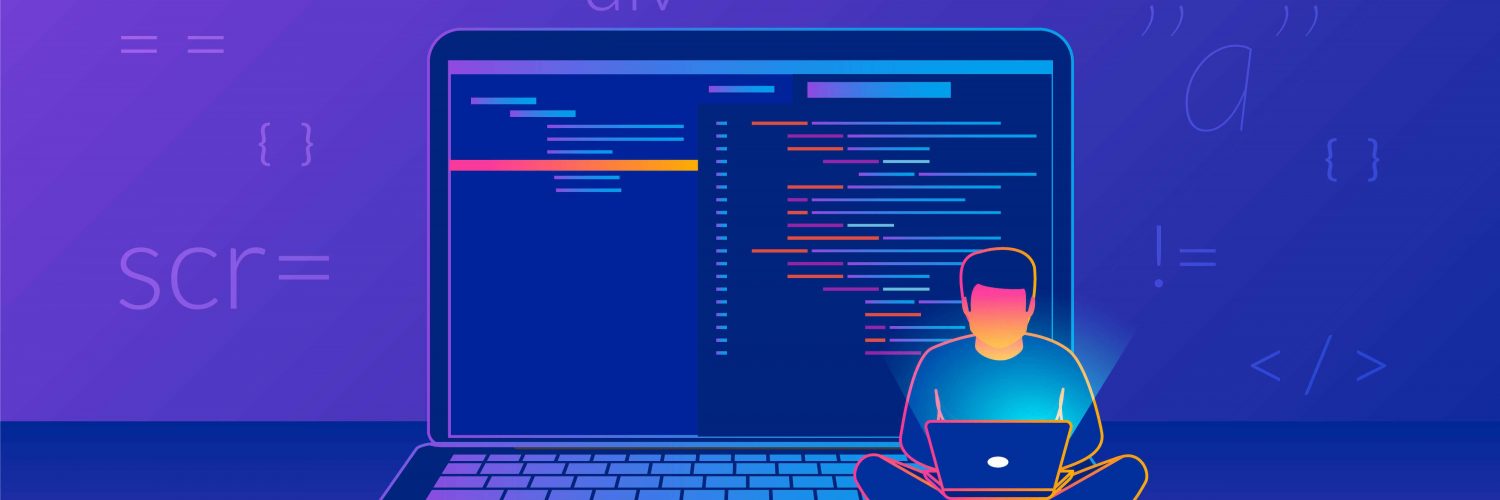The backend programming languages that drive web applications, systems integrations, and data management have always been the foundation for everything we do on the web. While established languages like Python, Java, and C continue to dominate, a new wave of emerging languages in 2024 is gaining traction, offering innovative features and addressing the limitations of their predecessors.
If you’re a tech enthusiast, a seasoned developer, or even a curious newcomer, this article is your gateway to exploring the freshest and most promising programming languages shaping the backend development scene this year. The dynamic world of backend development in 2024, where the landscape of programming languages is as vibrant and evolving as ever!
In this article, we share a detailed discussion of backend development, the evolution of programming languages, and the emerging programming languages this year, exploring their unique characteristics, potential applications, and the impact they are poised to make in the realm of backend development.
What is Backend Development?
Backend development refers to the server-side development of a web application or website. It focuses on databases, scripting, website architecture, and server management. The backend is where the application operates, and it’s responsible for managing and storing data, ensuring that everything on the client-side (frontend) works. The backend communicates with the frontend by sending and receiving data, which is then displayed to the user.
What Are Backend Programming Languages?
Backend programming languages are used to create the logic and functionality of a web application or website’s server-side. These languages interact with the server, databases, and applications. They handle tasks like user authentication, database interactions, logic, server configuration, and application business rules.
Types of Backend Programming Languages
Let’s first dive into the differences between these three types of programming languages: compiled, interpreted, and JIT (Just-In-Time) compiled languages. Each of these types of languages serves different needs in software development, and the choice among them often depends on factors like application requirements, developer preference, performance needs, and the specific task at hand.
Compiled Languages:
These are converted into machine code before execution, leading to efficient performance. Examples include C++, Go, and Rust.
Definition & Characteristics:
– Compiled languages are those in which the code you write is transformed (compiled) into machine code by a compiler before it is executed on a computer.
– This process results in an executable file, which can run on the hardware without further translation.
– The compilation happens entirely before execution, leading to optimized performance and efficiency.
Examples:
– C and C++: Known for their speed and control over system resources, they’re widely used in system/software development, game development, and applications requiring high performance.
– Rust: Gaining popularity for its focus on safety and performance, it’s ideal for systems programming.
Advantages:
– Faster execution time, as the code is already translated into machine language.
– More efficient in terms of memory and processor usage.
– Better for applications requiring high performance and speed.
Interpreted Languages
Interpreted languages are read and executed line by line by an interpreter, which makes them generally more flexible but sometimes slower. Examples include Python, Ruby, and PHP.
Definition & Characteristics:
– Interpreted languages are executed line by line by an interpreter at runtime, rather than being compiled into machine code beforehand.
– The interpreter reads, analyzes, and executes each line of code sequentially.
– These languages are generally more flexible and easier to debug due to their dynamic nature.
Examples:
– Python: Known for its readability and simplicity, it’s widely used in web development, data science, and automation.
– JavaScript (for client-side scripting): Powers dynamic content on websites and is fundamental in web development.
Advantages:
– Easier to test and debug, as you can execute the code directly without compilation.
– More flexible and better suited for rapid development and iterative testing.
– Platform independence, as the same code runs on any machine with the appropriate interpreter.
JIT Compiled Languages
JIT Compiled Languages use Just-In-Time compilation, offering a balance between the initial flexibility of interpreted languages and the performance of compiled languages. An example is Java.
Definition & Characteristics:
– JIT compiled languages combine elements of both compiled and interpreted languages.
– The source code is initially interpreted, but frequently executed paths are compiled into machine code at runtime, improving performance.
– This approach allows for both the flexibility of interpreted languages and the performance benefits of compiled languages.
Examples:
– Java: Uses the JVM (Java Virtual Machine) where the code is compiled to bytecode, which is then executed by the JVM, often using JIT compilation.
– .NET languages (like C): These are compiled into an intermediate language and executed by the .NET Common Language Runtime, often using JIT compilation.
Advantages:
– Improved performance over purely interpreted languages due to the compilation of frequently used code paths.
– Retains the platform independence and flexibility of interpreted languages.
– Offers a balance between development efficiency and runtime performance.
Emerging Programming Languages in 2024
Rust: Safety and Performance Redefined
Origins and Philosophy
Rust, developed by Mozilla, emerged from the need to address memory safety issues and concurrent programming challenges inherent in systems level languages like C and C++. Its design philosophy prioritizes safety, speed, and concurrency without compromising performance.
Key Features
Ownership and Borrowing: Rust introduces a unique memory management model, eliminating common bugs and security vulnerabilities related to memory.
Fearless Concurrency: Rust’s ownership model naturally extends to handling concurrent programming, enabling developers to write threadsafe code more easily.
ZeroCost Abstractions: Rust’s abstractions are designed to be as efficient as possible, mirroring the performance of lowerlevel code.
Use Cases and Adoption
Rust is ideal for systems programming, embedded systems, and other scenarios where performance and safety are critical. Companies like Dropbox and Cloudflare have started integrating Rust into their technology stack for its robustness and efficiency.
Why Learn Rust
Learning Rust offers an unparalleled memory safety and performance, and it is ideal for systems programming.
Go: Simplicity and Efficiency in Cloud Computing
Origins and Philosophy
Developed by Google, Go (or Golang) addresses the complexities of modern software development, particularly in networking and cloudbased services. It combines simplicity, efficient performance, and ease of use.
Key Features
Simplicity and Readability: Go’s syntax is clean and concise, making it easy to learn and maintain.
Builtin Concurrency: Go’s goroutines and channels provide a powerful yet simple mechanism for concurrent programming.
Fast Compilation: Go compiles directly to machine code, ensuring fast execution and deployment.
Use Cases and Adoption
Go is widely used in cloud computing, microservices, and distributed network services. Companies like Uber, Twitch, and Dropbox leverage Go for its scalability and performance in cloud environments.
Why Learn Go
Go is popular for its simplicity and efficient concurrency model, is excellent for cloud-based and distributed systems.
Kotlin: A Modern Twist for JVM and Android
Origins and Philosophy
Kotlin, developed by JetBrains, is designed to interoperate fully with Java while providing a more modern and expressive syntax. It addresses some of Java’s shortcomings, like verbosity and null pointer exceptions.
Key Features
Interoperability with Java: Kotlin is fuFlly interoperable with Java, allowing seamless integration with existing Java codebases.
Conciseness and Safety: Kotlin reduces boilerplate code and includes null safety features, minimizing common errors.
Versatility: While primarily used for Android development, Kotlin is also gaining popularity in backend development due to its efficiency and JVM compatibility.
Use Cases and Adoption
Kotlin is the preferred language for Android app development, as endorsed by Google. It’s also used in backend development for modern web applications and microservices.
Why Learn Kotlin
Kotlin is fully interoperable with Java, excels in Android development and is gaining traction in backend services.
Julia: High-Performance Programming for Data-Intensive Tasks
Origins and Philosophy
Julia, a high-level, high-performance programming language, is particularly designed for data science and numerical computing. It combines the ease of use of Python with the speed of C, addressing the need for fast computational performance in data-intensive applications.
Key Features
- Speed: Julia is designed for performance from the ground up, with speeds comparable to traditional systems languages like C.
- Dynamic Typing with Performance: Julia offers the flexibility of dynamic typing while maintaining high performance, a unique combination among high-level languages.
- Rich Ecosystem for Data Science: It has a thriving ecosystem of packages specifically for data science, machine learning, and scientific computing.
Use Cases and Adoption
Julia is increasingly used in areas that require intensive data processing and computational tasks, such as finance, bioinformatics, and machine learning. Its ability to handle large datasets efficiently makes it a promising choice for backend systems that require complex data analysis.
Why Learn Julia
Julia stands out in data science and numerical computing for its high-performance capabilities, marrying the ease of Python with the speed of C.
Swift: Expanding Beyond iOS to Server-Side Development
Origins and Philosophy
Originally developed by Apple for iOS, Swift has expanded beyond mobile applications to server-side development. Swift’s modern syntax, safety features, and performance make it a compelling option for backend programming.
Key Features
- Modern and Safe Syntax: Swift’s syntax is concise and expressive, with advanced safety features that prevent common programming errors.
- Performance: Swift is optimized for performance and can compete with traditional compiled languages.
- Cross-platform Support: Beyond Apple’s ecosystem, Swift has been adapted for server-side development, thanks to its open-source nature.
Use Cases and Adoption
Swift is used for developing scalable and performant web APIs and backend services, particularly where iOS integration is a priority. Companies are exploring Swift for server-side applications due to its efficiency and ease of use.
Why Learn Swift
Swift is primarily associated with iOS, is emerging as a powerful option for server-side development due to its performance and safety features.
Elixir: Concurrency and Fault Tolerance for the Modern Web
Origins and Philosophy
Elixir, built on the Erlang VM, is designed for building scalable and maintainable applications. It is known for its fault tolerance, scalable performance, and functional programming features.
Key Features
- Concurrency and Fault Tolerance: Elixir excels in handling numerous simultaneous operations, making it ideal for real-time systems and web applications.
- Functional Programming: Elixir’s functional programming paradigm encourages a clean and maintainable codebase.
- Erlang Ecosystem: It leverages the Erlang ecosystem, known for running low-latency, distributed, and fault-tolerant systems.
Use Cases and Adoption
Elixir is particularly well-suited for web applications that require high concurrency and reliability, like messaging apps and e-commerce platforms. Companies such as Pinterest and Discord have utilized Elixir to handle millions of users concurrently.
Why Learn Elixir
Elixir offers exceptional concurrency and fault tolerance, making it suitable for scalable web applications.
2024 Trends and the Future of Backend Development
As we explore these emerging programming languages, it’s clear that the future of backend development is leaning towards languages that offer safety, performance, and simplicity. These languages are not just theoretical exercises but are being increasingly adopted by industry giants for their critical systems.
The Shift Towards Concurrency and Real-Time Processing
The growing need for real-time data processing and high-concurrency applications is shaping the development of new languages. Languages like Elixir and Go, with their robust concurrency models, are becoming essential tools for modern backend development.
Emphasis on Language Ecosystems and Community Support
The success of a programming language is also dependent on its ecosystem and community. Languages like Rust and Kotlin have thriving communities and rich ecosystems, making them more attractive to developers and companies alike.
Interoperability and the Polyglot Programming Paradigm
Another key trend is the emphasis on interoperability with existing systems. Languages like Kotlin and Julia, which seamlessly integrate with Java and Python respectively, allow developers to leverage the strengths of multiple languages within the same project.
Conclusion (To be Continued)
The landscape of backend development is continually evolving, with new programming languages emerging to meet the challenges of modern software development. Rust, Go, Kotlin, Julia, Swift, and Elixir each bring unique strengths and capabilities, shaping the future of how backend systems are developed and maintained. As these languages mature and their adoption grows, they are poised to redefine the standards of efficiency, reliability, and scalability in backend development.
FAQS
How has the adoption of TypeScript influenced backend development trends in 2024?
TypeScript, an extension of JavaScript, will significantly influenced backend development in 2024. Its static typing feature brings enhanced code quality and robustness, making backend applications more scalable and maintainable. TypeScript’s compatibility with JavaScript ecosystems, alongside improved developer tooling, has made it a popular choice for full-stack development.
Are there any new programming languages in 2024 specifically designed for microservices architecture?
As of 2024, while there are no new languages exclusively for microservices, certain languages like Go and Rust are increasingly favored in this domain. Their lightweight nature, efficient performance, and ease of containerization align well with the principles of microservices architecture, offering scalability and resilience.
What advantages does using Julia for backend development offer in 2024?
In 2024, Julia is increasingly recognized for backend development due to its high-performance computing capabilities. Its strengths lie in handling complex mathematical operations, data processing, and analytics tasks, making it ideal for industries where these are priority, such as scientific computing, machine learning, and large-scale data analysis.
Are there specific industries or applications where Elixir and Julia are particularly advantageous for backend development in 2024?
Elixir, built on the Erlang VM, is highly beneficial in 2024 for applications requiring high availability and low latency, such as in telecommunications, financial services, and real-time messaging systems. Julia, on the other hand, is gaining traction in data-intensive industries like finance, bioinformatics, and analytics, thanks to its high performance in numerical computing and data processing tasks.
How does Go compare to other backend languages in 2024?
Go, or Golang, stands out in 2024 for its simplicity, high performance, and efficient concurrency handling. It’s particularly favored for cloud-native development and microservices architectures due to its robust standard library, ease of deployment, and excellent support for parallel processing.






Add comment